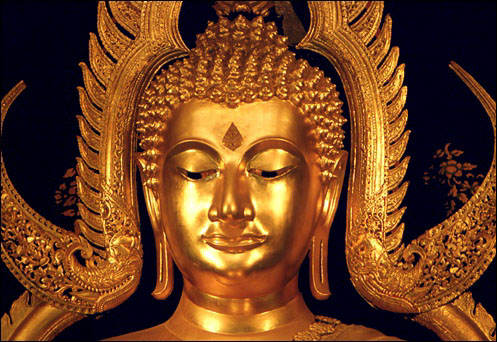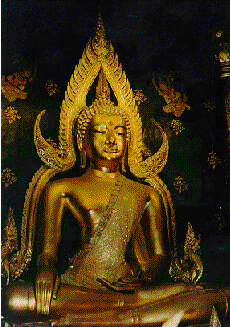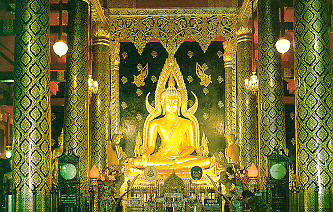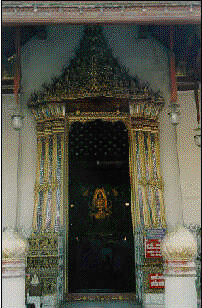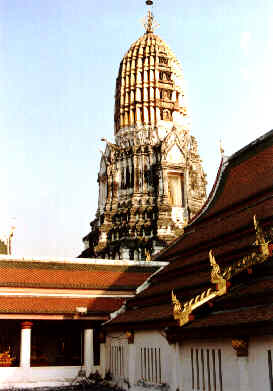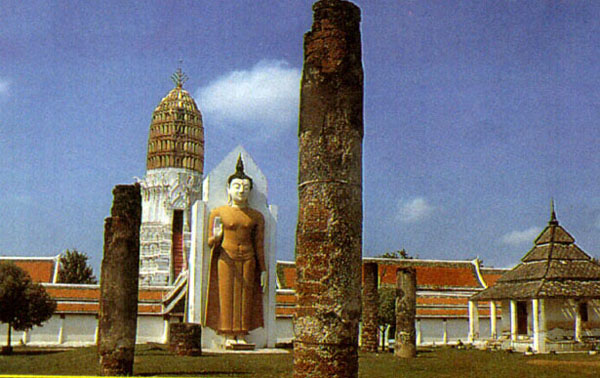|
Cast
in 1357, Phra Phutta Chinnarat is considered the most graceful Buddha image
in Thailand. Housed in Wat Phra Sri Rattana Mahathat Woraviharn in Phitsanulok
in Northern Thailand, it is also one of the most sacred Buddha images of
Thailand, so sacred that it is said to have wept tears of blood when the
city was captured by the Ayutthayan army in the early 14th century. The
Phra Phutta Chinnarat was casted in the late Sukhothai style and its speciality
is its flaming halo, which ends in nagas on either side of the Buddha.
It is also interesting to note that four of the Buddha's fingers are of
the same length. The gold on Phra Phutta Chinnarat was not present until
1631 when King Ekatotsarot of Ayutthaya offered some of his gold regalia
to be beaten into gold sheets to be used to plate the Buddha. Many replicas
of this Buddha image had been made and one famous one is housed in Wat
Benchamabophit in Bangkok.
|




